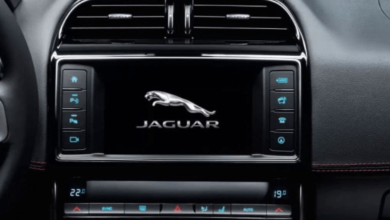Finding the Best ELD for Truckers: Key Factors to Consider for Your Business

Table of Contents
- Introduction
- Mandate Compliance
- Ease of Use
- Data Transfer Methods
- Integration with Fleet Management Systems
- Cost and Value
- Customer Support
- Scalability
- Security Features
- Conclusion
Introduction
In the fast-paced trucking world, ensuring your fleet complies with Electronic Logging Device (ELD) mandates is crucial. With many ELD options, finding the best ELD for truckers can be challenging. This article breaks down the key factors to consider when selecting an ELD, ultimately helping you make an informed decision that benefits your drivers and business operations.
Mandate Compliance
One of the primary reasons for investing in an ELD is to ensure compliance with federal regulations. Choosing an ELD that meets the Federal Motor Carrier Safety Administration (FMCSA) requirements is essential. This will help your fleet avoid penalties and maintain a good safety record. Non-compliance can result in hefty fines and even jeopardize your business operations. By adhering to these regulations, you not only sidestep legal consequences but also promote a safety culture within your fleet. Compliance lowers accident rates and enhances reputation, invaluable assets in the competitive trucking industry.
Ease of Use
Trucking is demanding; the last thing drivers need is a complicated ELD. Look for a device that’s user-friendly and intuitive. A simple interface can reduce drivers’ time logging hours and help prevent errors. User-friendly devices often come with step-by-step guides, video tutorials, and a streamlined user interface to make the transition smoother. In addition, a straightforward ELD system minimizes training time, allowing drivers to focus on what they do best—driving. Ensuring ease of use also means that in urgent situations or during routine checks, drivers can quickly access the necessary logs without stress or technical difficulties.
Data Transfer Methods
Efficient data transfer is vital for an ELD system. Ensure the device you select offers multiple transfer options, such as Bluetooth, USB, and web services. This flexibility can be crucial during roadside inspections, making it easier for drivers to present their logs without delay. Reliable data transfer methods ensure critical information is swiftly communicated to fleet managers for better oversight. With varying driving environments and connectivity options, having diverse data transfer methods can significantly reduce downtime. It also adds a layer of reliability, as different methods act as backups if one fails, ensuring continuous compliance and smooth operations.
Integration with Fleet Management Systems
An ELD is more than simply a logging device; it’s an essential component of your fleet management system. Look for an ELD that integrates effortlessly with your current systems. This can enhance operational efficiency by providing real-time data on vehicle status, driver behavior, and route optimization. Effective integration reduces data silos, enabling a more holistic view of your fleet’s performance and making it easier to manage logistics, maintenance, and compliance from a single platform. Moreover, integrated systems facilitate better decision-making processes. You can anticipate maintenance needs, optimize routes for fuel efficiency, and monitor driver performance to promote safe driving behaviors. The insights from integrated ELD data can lead to significant cost savings and operational improvements.
Cost and Value
While cost is always a consideration, weighing the initial investment against the long-term benefits is vital. Some ELDs may be more expensive upfront but offer features that save money and increase productivity over time. Conduct a cost-benefit analysis to ensure you get the best value for your investment. Look into the initial costs and subscription fees to get a clear picture of the total investment. Furthermore, it explores how the ELD can improve ROI through decreased administrative costs, better fuel management, and optimized asset utilization. Considering these factors, you can choose an ELD that pays for itself through enhanced operational efficiencies and cost savings.
Read also How Does React Help to Elevate UI/UX in B2B Apps
Customer Support
Reliable customer support is a critical factor in the ELD selection process. Whether you’re dealing with initial setup or troubleshooting issues down the road, having access to helpful customer service can make a significant difference. Check reviews and testimonials to gauge the quality of support different providers offer. Superior customer support helps minimize downtime and resolve issues swiftly, thus proving itself invaluable in maintaining compliance and operational efficiency. Having a team of dedicated professionals you can count on ensures that the ELD system remains a beneficial tool rather than a source of frustration.
Scalability
Your business is likely to grow, and your ELD needs may change. Choose a solution that can scale with your operations. This will save you the trouble of switching to a new provider in the future and ensure consistency in your fleet management practices. Scalable solutions often offer modular features, allowing you to add functionalities as needed without overhauling the entire system. As you expand, a scalable ELD system can smoothly accommodate new vehicles, drivers, and routes. This flexibility supports business growth without causing disruptions, ensuring that your operations remain seamless and efficient even as you evolve and take on new challenges.
Security Features
Given the increasing cyber-attack threats, choosing an ELD with robust security features is crucial. Data encryption and secure access protocols can protect sensitive information and ensure that your operations remain undisrupted by cyber threats. Look for providers that adhere to industry-standard security practices and frequently update their software to respond to new vulnerabilities. Security features such as two-factor authentication, encrypted storage, and secure data transmission are essential in safeguarding your operational data. By prioritizing security, you can protect your fleet from data breaches and cyber threats, ensuring that compliance and reputational integrity are maintained.
Conclusion
Selecting the best ELD for your trucking business involves careful consideration of multiple factors. By focusing on compliance, ease of use, data transfer methods, integration capabilities, cost, customer support, scalability, and security features, you can find a solution that meets regulatory requirements and enhances overall operational efficiency. Ensuring that your fleet is




